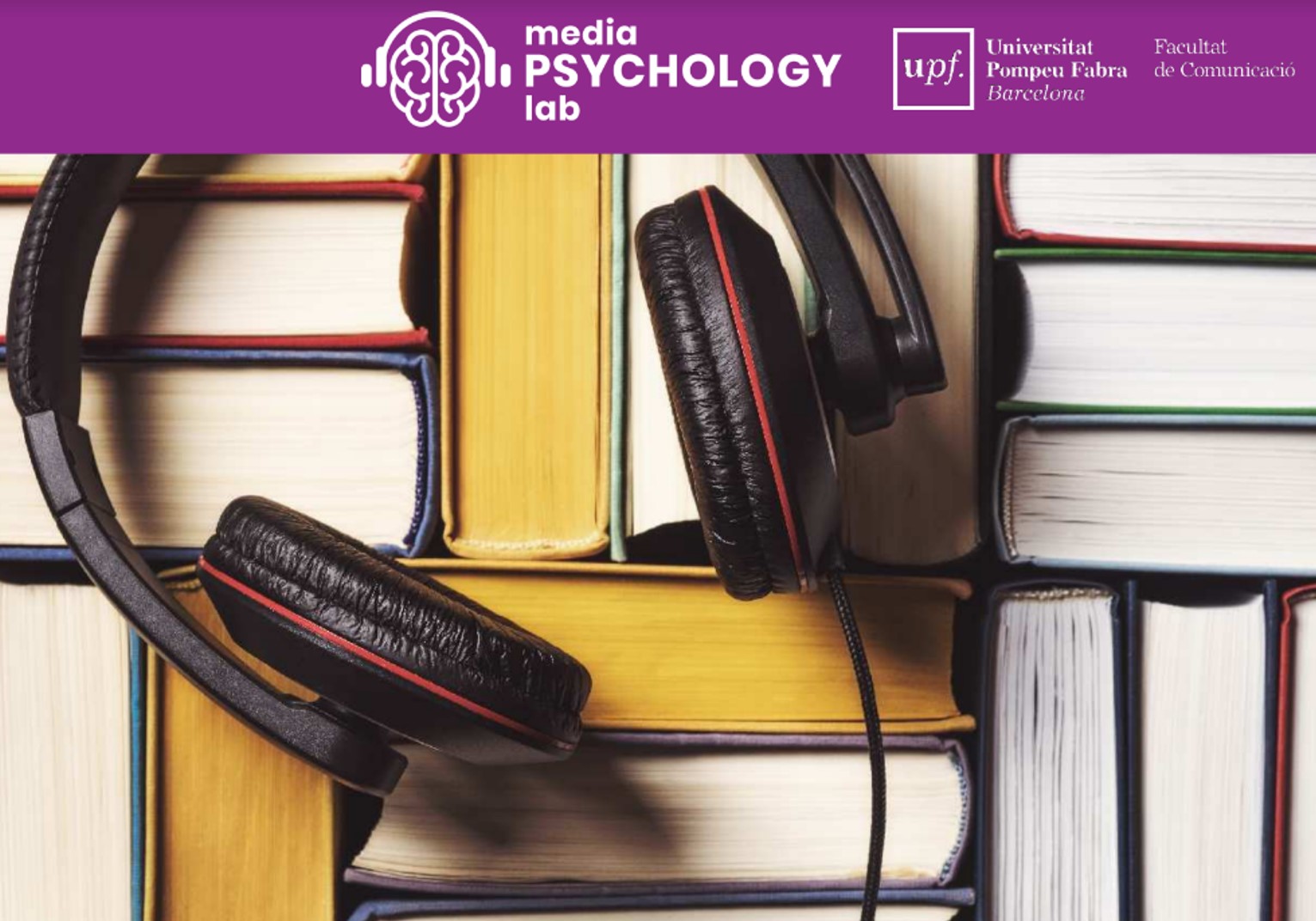Narration accompanied by binaural or 3D sound stimulates the senses more
It produces a more intense physiological reaction with increased emotional arousal in the body than a story with normal sound. This is one of the main conclusions of a neuro-scientific study on audiobooks conducted at UPF’s Media Psychology Lab, funded by Leonardo grants from the BBVA Foundation.

Emma Rodero, a professor with the Department of Communication at UPF and principal investigator of a project concerning which this morning, 12 March, on the UPF Poblenou campus she presented the results of her research: Estudio Neurocientífico sobre audiolibros. Qué formato transmite mejor la historia - Neuro-scientific study on audiobooks. Which format best conveys the story). The work was carried out in the Media Psychology Lab at the Faculty of Communication of UPF and was funded by Leonardo grants from the BBVA Foundation.
Binaural or 3D sound produces a more intense physiological reaction with increased emotional arousal in the body than a story with normal sound
The study measured the psychophysiological response of 60 subjects who listened to different stories told with different voices, types of narration and sound resources. One of the main conclusions is that binaural or 3D sound produces a more intense physiological reaction with increased emotional arousal in the body than a story with normal sound.
Deeper voices obtained the best ratings
First, the research studied which types of voices are most pleasant for audiobook narrations. In this case, deeper voices attained the best ratings followed by medium and then higher-pitched voices.
In the comparison between human and synthetic voices, human ones were enjoyed more, achieved a better narrative experience, created more mental images, the details of the story were remembered better and they displayed higher heart activity compared to synthetic voices heard through a smart speaker (Alexa), with a considerably significant difference.
A story performed with characters achieves a better narrative experience
The second aspect analysed in this research was the kind of narration used to tell the stories: flat narration, interpretation with one voice or interpretation with characters. In this case, the emotional reaction or the level of electrodermal activity was higher in the case of the interpretation with characters followed by interpretation with one voice and flat narration. Moreover, the story interpreted with characters was enjoyed more, provided a better narrative experience, created more mental images and was remembered more than stories told with just the one voice, especially if flat.
Stories with music and effects worked better
Thirdly, with regard to sound resources, stories told with music and effects, especially binaural ones, worked better than stories with human voices. Music and effects worked in the stories as listener attention messages. Binaural stories with music and effects increased participants’ heart rate most, indicating greater emotional arousal. In addition, they were also the ones with which subjects preferred to create more mental images, in which they felt most immersed in the story, and about which they remembered most details.
From a professional point of view, the results of the research may provide relevant information on how to produce audiobooks and podcasts that may prove very useful for the culture industry that works in this sector: audiobook companies, publishing houses, production studios or narrators/actors.
From the scientific point of view, the results of this research may contribute to furthering the study of how people process sound: the different types of voices and different sound resources such as music, sound effects and binaural sound.
Related work:
Emma Rodero (2020), Estudio Neurocientífico sobre audiolibros. Qué formato transmite mejor la historia. Fundación BBVA.
